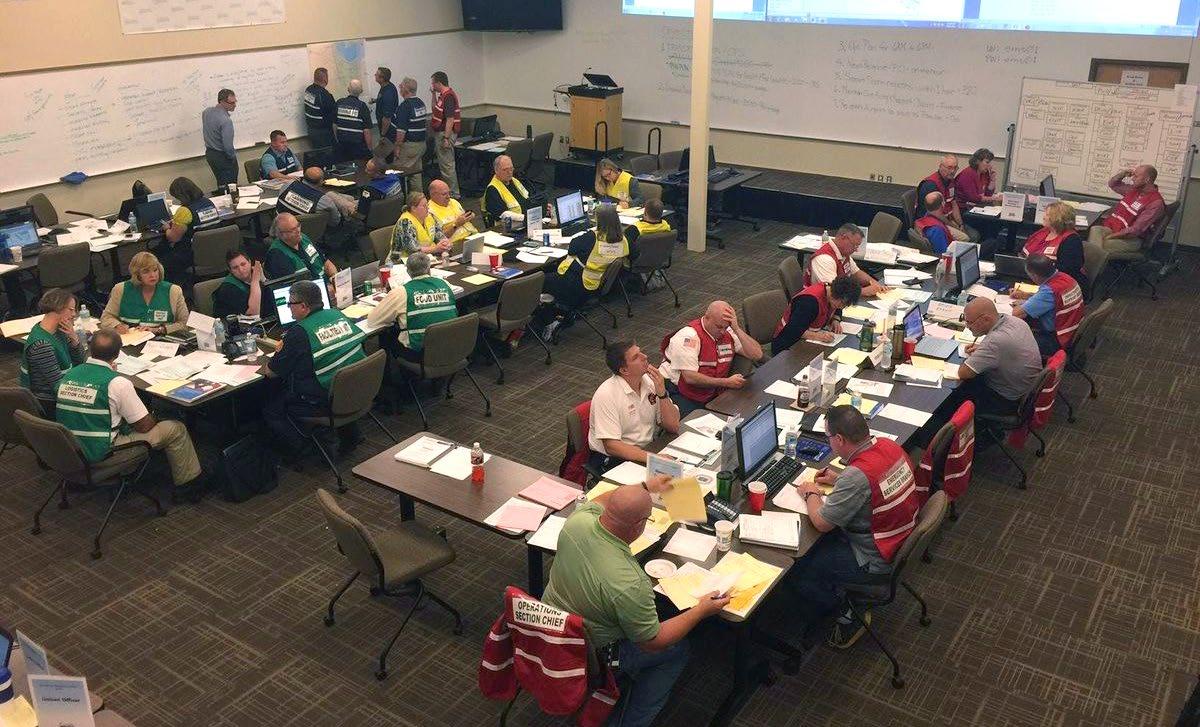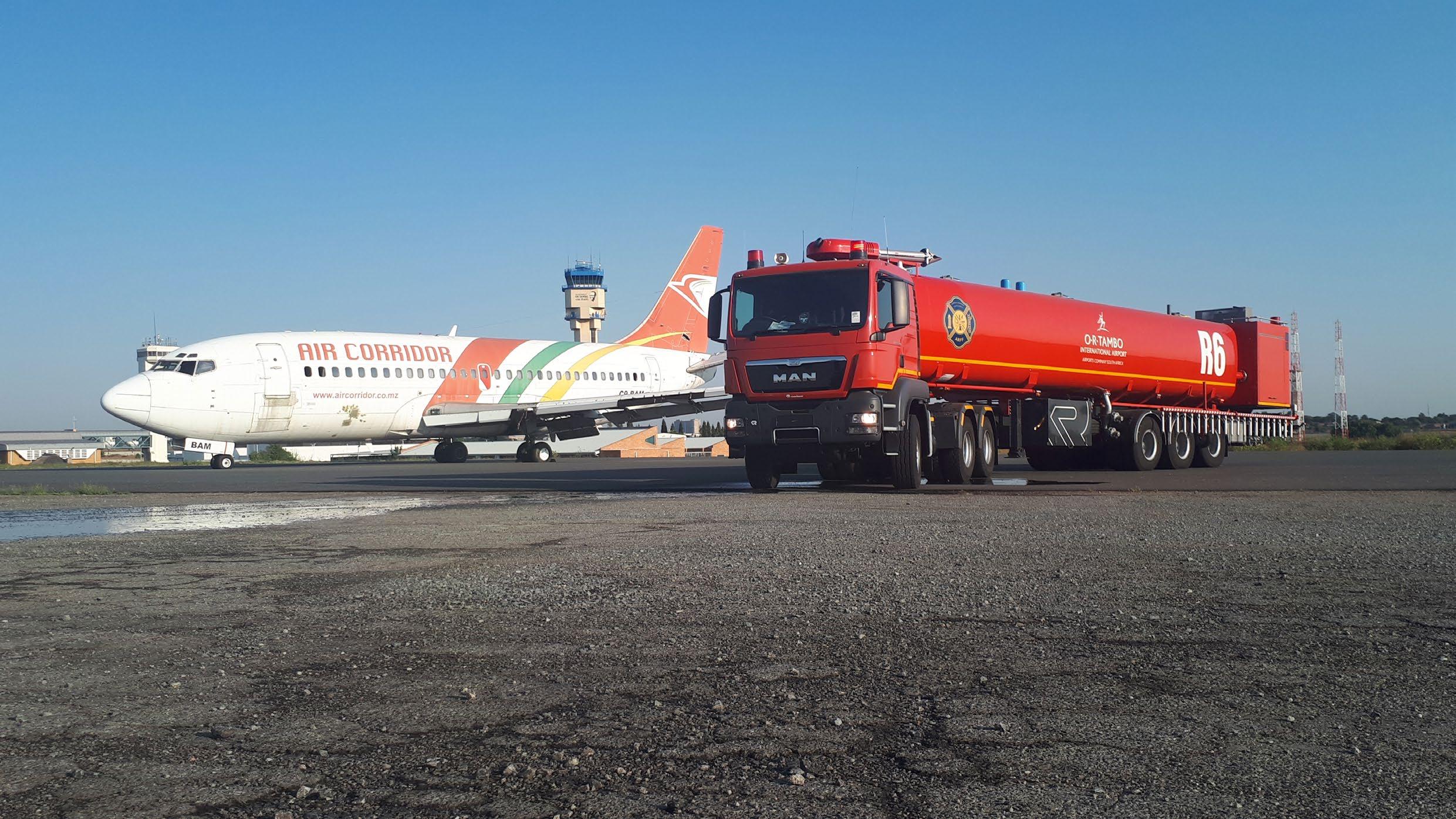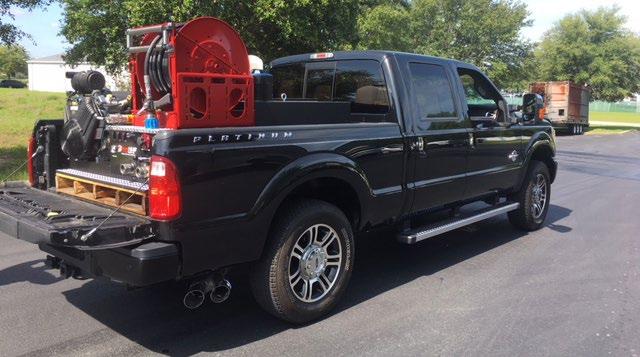
14 minute read
The Garden Route in flames: Chapter III
The Garden Route in flames: Chapter III - Developing the basic regional fire prevention plan
A book by Dr Neels de Ronde
Advertisement
The following article is the third in the series of excerpts from a book written by Dr Neels de Ronde, The Garden Route in flames. Dr de Ronde lives in Sedgefield in the Southern Cape, South Africa and has done extensive research in the field of land management and wildfire prevention. Dr de Ronde gave permission to Fire and Rescue International to publish the book in the magazine in separate sections for the benefit of all forestry and wildfire managers, fire protection associations and land owners in order to gain insight and an understanding of the intricacies that form the basis of such extreme fires and how it can be prevented, highlighting effective fuel management and fire prevention measures.
3.1 Developing the basic regional fire prevention plan: The top-down approach At this early stage of creating the regional fire prevention plan, it is important that we identify the natural as well as artificial fire protective lines and structures in the landscape, which can be used to advantage for this purpose and to determine where these lines can be incorporated into the fire prevention plan. This requires a holistic outlook for solving effective reduction of extreme fire hazard situations in the regional landscape, without even considering fixed lines, such as property boundaries. This is important because these lines (property boundaries) are all man-made and for fire protection purposes, many will be the worst to use for such goals because of wrong (ineffective) routes being selected for fire protection purposes!
Effective fire protection can only be achieved if the terrain (general topography, aspect and slope steepness) is properly assessed, together with the direction from where “hazardous fire approach” is most probable, such as from the general northerly direction along the Garden Route.
Then the fire history (and mapping thereof) is also totally neglected and in particular the related changes in vegetation age of some areas and this includes in particular the consideration of the 2017 and 2018 wildfires into future regional planning. I fail to see such plans. Where is the regional plan for the Garden Route, as affected by the recent wildfires? I will, with this writing, provide some guidelines for such a future plan. However, my attempts will here only be to provide some ideas and by no means are any of these “units” or “buffer zones” fixed. This depends on the actual vegetation cover and classification of the subregional areas. Remember that all this planning will have to be flexible, so that these can be adjusted in the case of future significant wildfires taking place.
3.2 Basic after fire decision-making The most useful topographical features along the Garden Route, which can be used for fire prevention purposes, are the rivers carving through the plateau, from the mountains in the north to the Indian Ocean in the south. Then the national
involved in the incident. Emotions have no place in a debrief.
Training The use of qualified, experienced incident command system facilitators is vital. A one or two course coaching opportunity does not make a person an ICS facilitator. ICS is not just about reading from a slide or a book; it is to provide an understanding of implementation to each student in front of you. As an ICS facilitator, if you do not understand the process and each step’s role, responsibility, forms, inputs and outcomes, you are not ready to train ICS. Use registered training service providers and ask for qualifications in ICS training skills.
Lessons learnt outcomes must be shared and implemented! It is of no use if it is only on paper and not shared with all. Ask yourself, why are we not sharing lessons learnt from incidents? • Is it because it is about people or organisations and not what happened? • Is it because egos are too big? • Is it because we do not care? • Is it because we think we do not make mistakes? • Is it because we think it will not happen again? • Is it because we do not want to share new ideas because then it is not yours? • Is it because someone in a lessor rank/position can’t have better ideas?
Share, share, share then we will all learn from mistakes. Do not keep your lessons learnt a secret. It might just save a life.
Photograph 9: The Garden Route region, excluding the Tsitsikamma, with the “study area” demarcated with a red line. The white lines are the national roads to be incorporated, while Photograph 6 can be used to planning the routes of these buffer zones to be created through the 2018 wildfire area (unknown image origin, while the author has drawn in the added lines).
roads can many times also provide perfect baselines for buffer zones, simply because these lines through the landscape provide permanently-cleared (tarred) surfaces, mostly with fuel reduction measures applied on road shoulders, added to create a substantial firebreak-base for buffer zones. Some road shoulders offer mostly “green” vegetation which can also not carry a continuous fire in such a low profile fuel bed, and are normally maintained as such by the authorities responsible for these tasks.
Then major wildfire areas have to be incorporated to make provision for future inclusion of sections of buffer zones, making provision for the time when such additions are possibly burnable. This has to be planned accordingly, to ensure that an effective regional fire prevention plan is maintained as such at all times, with the correct burning and other clearing methods applied at set times in a regional fire prevention plan. The buffer zones through the mountain catchments have to make provision for at least two continuous sub-zones to be burned in rotation, about four to five years apart.
3.3 Placing the main (regional) buffer zones The strategic-correct placement of the regional (or main) buffer zones will then also be the most important basis for effective regional protection against wildfires. For this reason, the structuring and maintenance of the main regional buffer zones will always be top priority and should be in the form of continuous lines, with mosteffective widths where feasible, to enable the reduction of wildfire size into smaller (more manageable) areas from a fire fighting point of view (Calvin et al., 2004).
3.4 Main buffer zone notes (western study area) B1: This buffer will be running west of the main tarred road between Hartenbos and Oudtshoorn, as indicated on Photograph 10. This buffer runs east of this road system at first, missing the Urban-Interface area west of this road (new sub-Urban area), which is situated closer to the Indian Ocean (Photograph 10).
The top northern portion of this buffer was mainly burned over by the 2018 Outeniqua wildfire, which will have to be incorporated when the burned over fynbos is ready to carry a prescribed fire. However, any Pine plantations at present established on the foot slopes where this buffer will run through should be prescribed burned under tree canopies as and when required.
The centre of this buffer consists mainly of agricultural land, which is ploughed regularly and can thus be incorporated as such, with patches of Renosterveld, which have to be incorporated into the buffer by means of rotation burning, to form combined continuous fire prevention lines. The bottom (southerly) portion of this buffer has to be treated as such, as and where land-use makes this feasible.
B2: The northern section of this buffer will run through the 2018 wildfire area, only to be incorporated when ready to be prescribed-burned in rotation when available for this in the future. The rest of this buffer zone runs through the landscape, as yet untouched by the recent wildfires. It will run along the Great Brak River gorge forming a base for future fire prevention, running from north (linking it to the Outeniqua wildfire area) to the south (as far as the Indian Ocean beach near the Great Brak River mouth (Photograph 10).
Where industrial Pine plantations have been established on the foot slopes of the Outeniquas where the buffer will run through, landowners will have to prescribed-


Photograph 6: View of the Knysna fire area after the fire, from its origin, through Knysna, to the Harkerville plantation on the far right of the image (Courtesy CSIR/AFIS).
burn the land falling within the buffer area, when crown canopy closure will make this possible, by means of under-canopy prescribed burning application.
The fynbos within this central portion of the buffer consists mainly of patches Renosterveld within agricultural land. The Renosterveld will have to be incorporated into the prescribed burning plan to aim at establishment of continuous fire prevention lines in the landscape, preferably on a rotational basis, whenever the veld is ready to carry such a continuous fire.
B3: This buffer will run from the west to the east all along the Outeniqua foot slopes, connecting the Robinson Pass with the Outeniqua Pass (Photograph 10). This will in some places include the outliers of the Outeniqua
Photograph 7 is illustrating in particular how the national roads through the Garden Route region are placed in relation to the formation of the regional buffer zones.


Photograph 10: Zooming in on the western study area section, with the main buffer zones now also added, using not only the road systems but also the topography linked to consider the routes for the main buffers and existing vegetation and the 2018 wildfire area (main buffers B1 to B6). Source: Image from Google.Earth, while the author has drawn in the added lines
wildfire but in others industrial Pine plantations, which were either burned over by the Outeniqua wildfire or were not burned then (Photograph 10).
Where the plantations mainly consisted of Pinus radiata plantings these can mostly only refer to off-site establishments, which should rather be converted to Pinus elliottii in future rotations. The latter species are also fire resistant and can subsequently be incorporated with ease in rotational burning under their tree crown canopies.
B4: This is basically just a continuation of the B3 main buffer zone and the same applies here as described under the B5 buffer zone. As more of the P. radiata here was burned over by the Outeniqua wildfire and these stands were neither thinned nor pruned it will be up to managers to decide how these sites will be treated in the future. However, the fact that these stands (when left unburned) also present a high fire hazard threat, should be considered, whether to be converted to fynbos or to stands maintained in plantation-form (Photographs 10 and 11)
B5: This north-south buffer zone does run through some vital fynbos, which has been exposed to wildfire three times during my career and should be regarded as “hazardous”. The northern section was again burned over during the Outeniqua wildfire and, as soon as burnable, should be prescribed-burned as soon as possible in rotation. The portion south of the B4 buffer zone should be incorporating the Kaaimans River gorge, with added fynbos burning on its sides, for maximum protection, burned in rotation west and east of this gorge as and when fynbos is available for such treatment (Photograph 10). 3.5 Main buffer zone notes (eastern study area) B6: This buffer is situated with the Goukamma River and valley as its base, from a general northerly to southerly direction. Most of this valley is covered by ever-green pastures apart from the wide river itself, while also presenting some unburned and burned over indigenous shrubs covered by the 2017 Knysna fire (Photographs 10 and 11).
B7: This buffer is an automatic choice as (a) the central section of this buffer is mostly formed by the Knysna forests, which is a perfect natural protection buffer and (b) the buffer north of this was mainly burned out by the Outeniqua wildfire (both the old fynbos as well as the Industrial plantations). The latter will have to be treated with fire whatever its vegetation base may be; Fynbos when reaching prescribed burning age and the plantations (most probably P. elliottii) when crown canopies are closed and then in two year rotation (Photograph 11).
The buffer-part in the far south of the land has mostly been covered by informal settlements but these townships need to be isolated from the original Knysna town by means of effectively-cleared firebreaks, as will be the urban interface between the townships and the Kruisfontein plantation in the east. Here whole compartments have to be treated with fire at least on a two-yearly rotation and the areas there burned over by the 2017 Knysna fire, preferably reestablished with fire-resistant P. elliottii stands.
B8: This buffer runs from north to south as indicated, with the Keurbooms River and its surrounding indigenous forest (or scrub forest) as a natural fire prevention buffer, with no additional treatment required. The northern section of this buffer, however, may have some old fynbos

Photograph 11: Zooming in on the eastern study area section, with the main buffer zones now also added, using not only the road systems but the topography linked to consider the routes for the main buffers, also accounting for existing vegetation and the 2018 wildfire area (main buffersB4 to B8). Source: Google.earth image, while the author has drawn in the added lines.
which needs to be burned to form a continuous firebreak with the rest of this line. However, if too old, such senescent fynbos might have to be isolated in the form of cut-off hazardous islands (Photograph 11).
Photographs 9, 10 and 11 are by no means final because of the “top down approach” used to remain flexible and I am sure there is room for improvement. Also note from Photograph 10 that the area burned over by the 2017 Knysna wildfire area has been demarcated on the picture with a dark-red line.
3.6 Within-buffer zone policies The objectives for within-buffer zones policies will always be to prescribed-burn the available vegetation fuel strictly according to schedule, which has been developed to provide the least fuel loading for sub-zones and also to create within-zone rotations, to have always effective sub-zones being non-burnable at any one time in the form of continuously-cleared line strips.
The objectives will here be not to create buffer zones that are completely fuel-free all the time because this will not be feasible. However, areas within buffer zones should always be creating lines from where a wildfire can be fought or within which spotting can be brought under control in time when extinguished by fire fighters, before becoming uncontrolled.
Another important issue to be considered will be the legislation required with regard to the different properties; private and Government land, where portions of this land will now be covered by the main buffer zones (see Photographs 10 and 11). Most important will be to streamline legislation at first to make “emergency fire prevention measures” possible under disaster management legislation. Central Government will have to be consulted regarding the control over buffer zones where national roads are situated. Also to be considered should be where Provincial Government is the controlling body, where eg the overall control over the fire prevention plan is required. The local Government (municipalities) will have to be consulted regarding control over the land falling under their control, particularly in connection with the routing and maintenance of the main buffer zones through the land they are responsible for.
The overall control over the creation and maintenance of the buffer zones for the region involved, should be a shared responsibility between Central and Provincial Government and the Garden Route region (study area) should be used as a unique example to counteract the impact of the recent 2017 and 2018 wildfire disasters and to ensure no repetition of these crippling events.
This “master plan” will thus act as a “White Paper” for extrapolation to other regions within the Western Cape Province, and also to other SA Provinces. Of course the Western Cape Provincial Government should feel free to extrapolate the “Garden Route plan” to other regions within the province as and when required, with the required adjustments as and when needed, as their staff will also have to be trained to apply this further without guidance.
Subsequently, the Western Cape Provincial Government should seriously consider appointing and training a few “champions” for control over the new planning approach. For this purpose, we can discuss my personal involvement to make this possible, including the use and development of fuel model sets for specific regions. I also hope that this handbook can lead to the use of the methodology at national level within South Africa.










